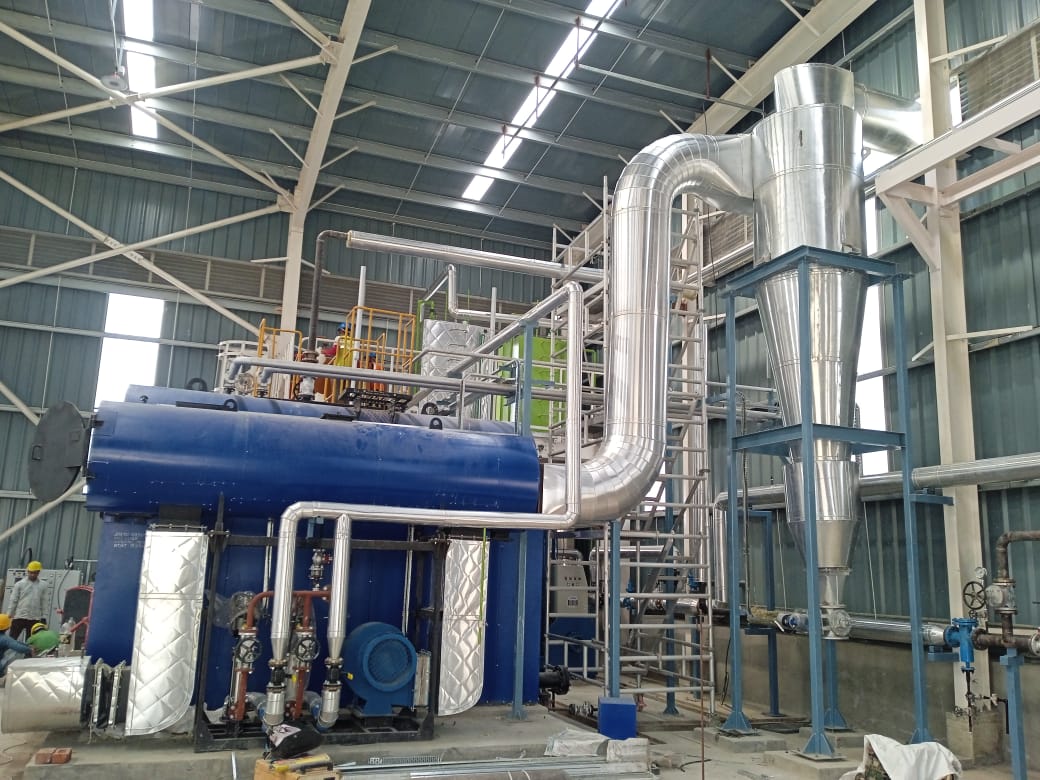Steam boilers operate using the combustion process. Burners are also a crucial component in the combustion process. The burners provide the heat required for a boiler to turn water into steam. In general, a burner should achieve the highest combustion efficiency while using the least amount of excess air. The burner is a blowtorch used in industry to push heat into steam boiler systems. The heat is injected according to the steam demand.
The role of burners in steam boilers:
Industrial burners are based on the simple idea of mixing fuel with air to create combustion. The most common fuels used to ignite burners are coal, natural gas, oil and propane. Over the past few years, many facilities have switched from coal to natural gas as a cleaner and more efficient fuel.
No matter what type of fuel is used, the burner must carry out five functions:
- Fuel is passed to the combustion chamber
- Transporting air into the combustion chamber
- Fuel and air mixture
- The mixture is ignited and burned
- Eliminate combustion products
When all combustible compounds and elements of the fuel have been completely oxidized, complete combustion occurs. Complete combustion can also lead to dangerous byproducts such as NOx and CO.
The amount of NOx or CO produced varies depending on the type of fuel and burner. Uncontrolled burners produce 60ppm and more. Low NOx burners, which typically produce 30 ppm of NOx, are currently the standard. Ultra-low NOx burners have been developed but can only be used with natural gas or propane.
Components in Steam Boiler Burner:
The burner controls the air supply to the fire by some means. The medium may vary from a single-blade damper to variable blades at fan inlet, and can also include a Variable Speed Drive (VSD) in the motor.
For optimal combustion, dampers or VSDs must control airflow without sticking, falling or causing variations in airflow. The dampers must also maintain the airflow without causing distortions to the flow.
Types Of Burners:
Gas burners:
The post-mix and premix techniques are used in gas burners. The post-mix technique involves combining oil and gas after they enter the furnace.
The two types of post-mix gas burns that are commonly used to heat the gas mixture are called atmospheric burners and power burners. The combustion air is delivered to the burner by means of fans and blowers, but atmospheric burners are not equipped with these.
Pre-mix burners have a lower usage rate than premix burners, as operators who move from burning equipment to boiler plants prefer the premix burners.
Oil Burners
Oil guns are used to add fuel oil to the burner. The oil gun has a burner tip on the end. The tip and gun arrangement varies depending on the type of atomization. Oil burners come in two different types.
Vaporizing Burners: In vaporizing burners, the fuel is vaporized by passing it through a tube adjacent to the flame at a low pressure. The vapor stream is released from an orifice with a high speed and entrains the primary air.
Atomizing burners are atomizing burners that atomize liquid fuels prior to combustion. To atomize, a liquid jet or thin film is produced and emitted into the atmosphere at an appropriate velocity.
Correlation of air and burner in a Steam Boiler:
The optimal air flow is essential for efficient fuel combustion. The air-to-fuel ratio is used to determine the efficiency of burners. Unburned fuel deposits as soot inside boiler tubes when the ratios between fuel and air are incorrect. The heat cannot pass through the tubes and into the water. This reduces the amount of steam produced. Burner combustion problems are caused by fluctuations in supply air temperatures.
It is possible to prevent this from happening in the steam boiler. The temperature variation is what affects the burner combustion.
Byproducts from Burner:
- The burner ignites and maintains flames using the optimal fuel-to-air ratio. The combustion produces CO, CO2, particulate matter and NOx. The production of these byproducts is regulated under environmental regulations. These limits can be met through methods such as pre-combustion or post-combustion.
- There are different methods for reducing the byproduct. The steam boiler system can be reduced by increasing the efficiency of the boiler. It reduces CO2 emissions. On the other side, certain low-NOx burners are able to reduce NOx levels to below 10ppm. Usually, this is achieved by lowering flame temperature.
Conclusion:
Vedaengg is a leading boiler manufacturer and combustion expert in the world. We specialize in boiler burner design. Our company has more than 25-years of experience designing and manufacturing steam burners and boilers. Veda Engg has a wide range of superior boilers burners compatible with different fuels and applications.


